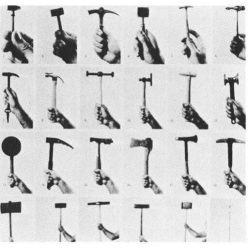This text was assigned for our final workshop session, and although I did not select this reading before class, following the discussion with my peers in the session and an unusually high level of complaints received from students after publishing some written feedback in one of the units I run, I thought it might be worth returning to it.
The text summarises students’ reflection on written feedback that is provided as handwritten notes on submitted essay and is handed out physically in class or picked up by students. This is very different to the way students receive feedback at UAL via the Assessment/Feedback platform or TurnitIn comments, where they access the feedback not through direct interaction with a tutor (even if it’s only through handing out marked essays) but independently, through a digital platform.
The text suggest that additional feedback opportunities or 1-2-1 tutorials are not always the solution in improving the students’ engagement with and understanding of feedback processes, but that instead we need to consider the way we share and discuss it with students, providing them with opportunities to understand the aims of written feedback.
The text has made me reflect on the recent instance of an apparent increase in student complaints around their grades and the perceived mismatch between the feedback and grade received for our final year dissertation unit. The text speaks about feedback being a highly charged emotional event and, indeed, this would seem to be the case with our unit. Upon receiving their grades via OAT, many students emailed us to say they want their work remarked by another tutor or that the feedback received does not reflect their work and that they don’t accept the justification given for the grade. These complaints are often very easily resolved through a conversation with the tutor, who explains their feedback (either in writing or 1-2-1 tutorial) and offers key passages from the submission as evidence for the way students met the learning outcomes.
In this instance, as in the text, it is about considering the format of feedback (written + conversation) or further work that needs to be done with students prior to the assessment period to really make them understand and engage with the process of assessment so they can feel confident it is undertaken fairly and rigorously. This is particularly important when teaching across the whole school cohort (500+ students in each year).
